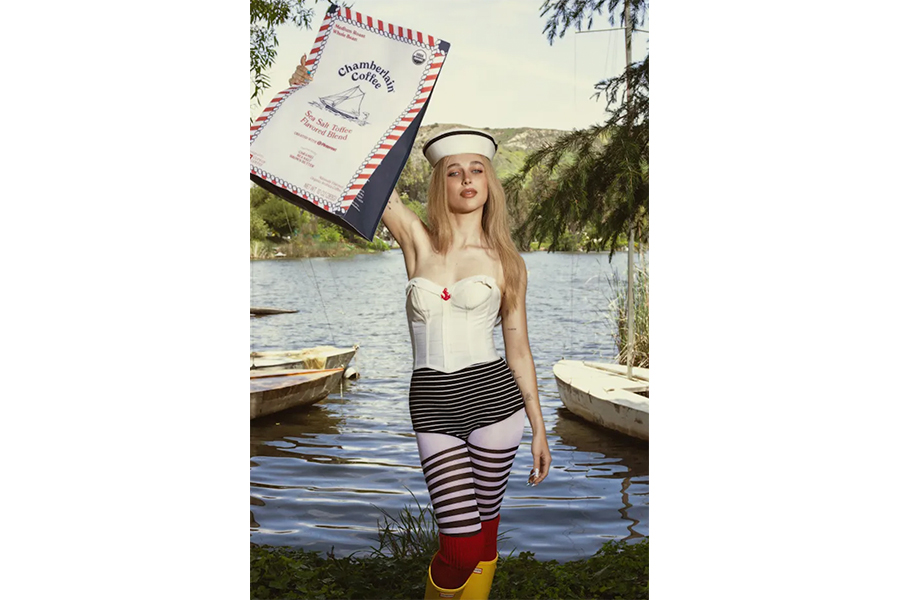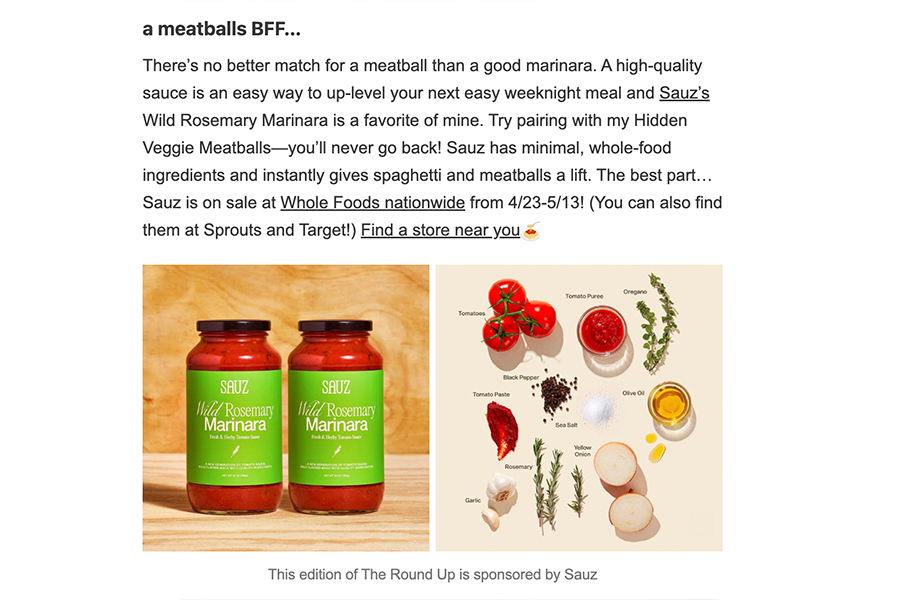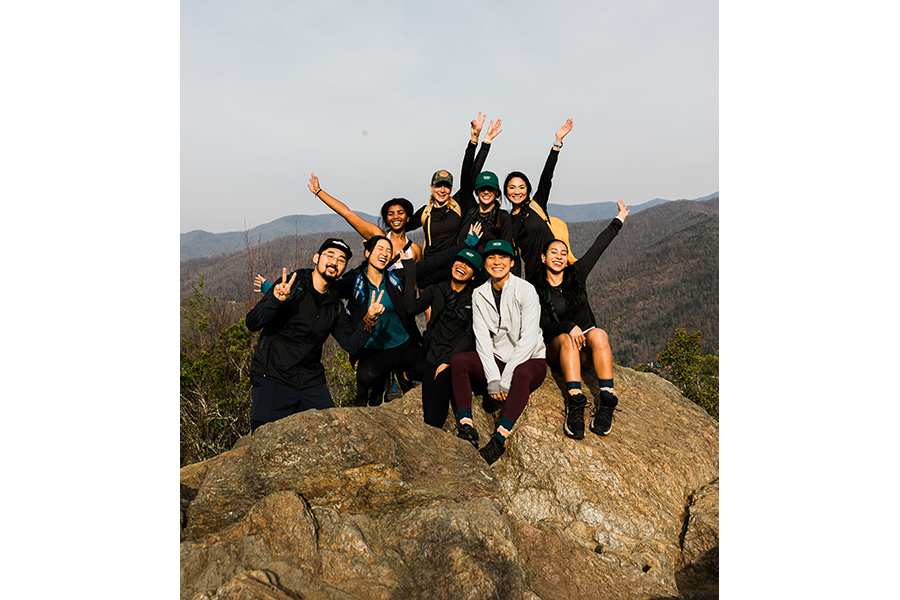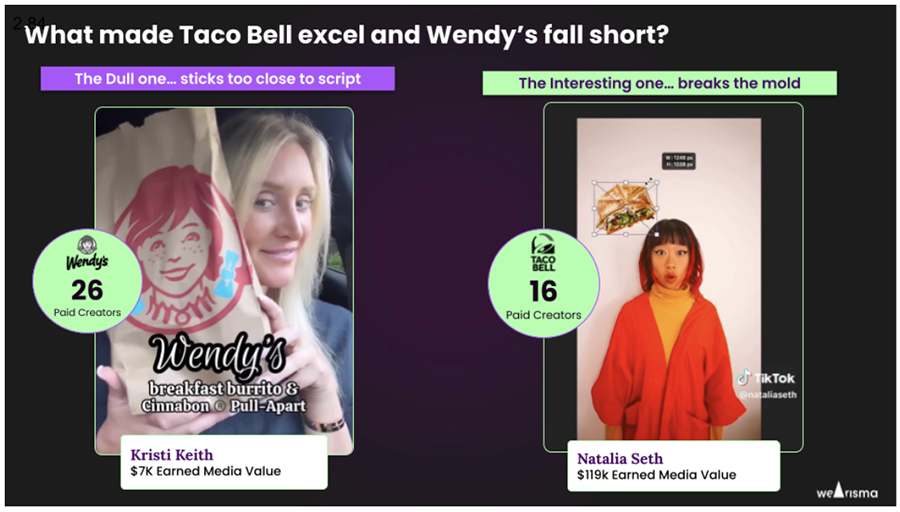The influencer playbook is being rewritten. In this roundup, industry leaders reveal what’s getting real results—and what’s getting scrolled past. Read on for their hot takes, fresh tactics, and a few hard truths about what no longer works.

Emma Chamberlain x Pinterest courtesy of Autumn Communications
Carmela Feliciano, VP of Talent & Creator, Autumn Communications
What’s working:
We’re seeing a shift toward 'community-first' influence — creators who are deeply embedded in a niche and speak to their audiences with transparency and specificity. The content that performs best feels personal, useful, and opinionated — not overly polished. Brands that feed into their community (and I mean, their customers) are also seeing their work pay off. Influencer trips are no longer JUST for creators, they're for individuals who have influence in their friends' group chat.
The recent Chamberlain Coffee x Pinterest collaboration exemplifies this concept of alignment and synergy when it comes to partnerships among creators and their brands. Emma Chamberlain has mentioned just how much she has used Pinterest organically. Our team connected the creator (and her brand) with Pinterest to not only partner -- but do so in a way that felt authentic to all parties.
What’s not:
Overly scripted influencer content tied to broad brand messaging just doesn’t cut through anymore. Audiences are hyper-aware of inauthenticity, and creators who don’t have a clear, consistent point of view — or are promoting products outside their typical scope — tend to see lower engagement.
Lindsey Cook, Marketing Director, The Digital Dept.
What’s working:
One thing we see working in the space right now: Content creators with an expertise, their own business, their own passion projects, and who are overall just well-rounded and intentional with their content. The influencer space is constantly evolving, and right now we’re seeing a lot of success with the creators who are thinking big picture with projects like books, podcasts, product lines, and so on, projects that expand their revenue opportunities beyond the traditional paid partnership post and allow them to engage with their fans in new ways.
What’s not:
One thing that’s no longer effective: Posting the same thing every week and expecting a different outcome, then wondering why you aren’t growing or getting good engagement. The best creators are experimenting and trying new things constantly, as social media behaviors can shift rapidly.
Nicholas Spiro, Chief Commercial Officer, Viral Nation
What’s working:
Co-creation is #Winning. Brands that invite influencers to shape the narrative or the product itself are getting deeper buy-in from both creators and audiences. Charli D’Amelio partnered with Dunkin to make Charli’s favorite iced coffee become an official menu item, “The Charli”. The campaign drove a 57% bump in app downloads and a 45% increase in cold brew sales on launch day, cementing her involvement as integral to the product itself. E.L.F. and Viral Nation's partnership brought beauty influencer Mikayla deep inside the brand and ended up with 50,000 units sold in 10 hours - and as the #1 item in TikTok Shop in the United States.
What’s not:
Campaigns that treat influencers as media placements instead of community builders. Audiences want relationships and connection, not ads. One example of this was with content creator Cecilee Max-Brown, who attends Michigan State University, alongside Biore, the company she was promoting. They paired a mental-health narrative with skincare promotion, leading to an inauthentic feel and ultimately consumer backlash. In the Creator Economy - authenticity always reigns supreme.

Viral Nation
Ashley Powell, Talent Manager, Frost & Co.
What’s working:
Curated and thoughtful creator casting; rooted in real emotional alignment; is where we’re seeing the most impact. For Allure Bridals, we received over 100 submissions from creators who were either currently engaged or deeply embedded in the bridal and wedding space; from that group, we selected four whose stories naturally aligned with the brand’s identity. We took the time to pre-vet them for meaningful, personal narratives.
The goal was to spotlight the launch of their latest collection at Barcelona Bridal Fashion Week; the most prestigious stage in the category. But what made the campaign truly memorable was the emotional storytelling that unfolded around it. These creators shared powerful “firsts”; walking a runway at a global fashion show for the first time (@squidwestra), trying on wedding gowns for the first time post-engagement (@lucierosedonlan and @lukemabbott), landing their first brand deal, and traveling abroad for the first time in years (@thereallillieduke). That level of real connection is what audiences engage with and remember.
What’s not:
Influencer marketing that operates in a silo. When it’s disconnected from the broader 360 strategy, it tends to underdeliver. We’re currently working with Casablanca Bridal, where the influencer activation is the foundation; but it's surrounded by complementary content, press, retail moments, and personal brand elements of the creative director/founder. When influencer marketing is treated as a strategic pillar rather than a side tactic, the entire campaign performs better.
Deanna Ritter, Managing Director, Glossary Artists
What’s working:
Substack is quickly becoming a powerful tool, offering a more personal, long-form way for creators (and even brands) to connect with their audiences. It feels like the new blog: a dedicated space to share meaningful content, build loyal communities, and drive strong engagement. At a time when attention spans are short and Stories and Reels can easily be missed, Substack stands out. More brands are taking notice—not just as a campaign platform, but as a fresh way to re-enter editorial storytelling. Creators are now offering custom newsletter integrations and are seeing stronger performance and impact. It can also be a more cost-effective way for brands to collaborate with talent and test new messaging or product placements authentically. Here is an example of how Jenn Lueke of @JennEatsGoood partnered with Sauz to highlight their promotion at Whole Foods.

@JennEatsGoood x Sauz courtesy of Glossary Artists
Nicole Bynoe, Director of Brand Partnerships, Kensington Grey
What’s working:
Influencer marketing is constantly evolving, and what once worked may no longer resonate. Hyper-aspirational content is losing traction, with audiences now gravitating toward creators who feel relatable. Heavily showcasing the lavish and the excessive is not necessarily what people want to see so prominently anymore, and we’re seeing a rise in popularity of those happily maintaining a 9-5 job alongside content creation. Narrative-driven campaigns are also thriving, as influencers share ongoing stories (e.g., car shopping, apartment hunting), encouraging repeat viewership and building lasting audience loyalty.
Jackie Abrokwa, Director of Brand Partnerships, Kensington Grey
What’s not:
Follower count is becoming one of the least reliable indicators of influence. Brands are finally realizing that a large audience doesn’t guarantee meaningful engagement—or conversion. We’ve seen creators with under 50K followers drive more sales and community action than those with 10x the following. It’s all about connection now. The smartest brands are shifting their focus to metrics like saves, shares, link clicks, and real-time sentiment. Quality over quantity is no longer just a trend—it’s a necessity.
Erin Bailey, Founder & CEO, Momentum Management
What’s working:
Long term partnerships! Industry went away from this for a long time to try and test different creators but we're back to seeing long term partnerships working well for both sides. It gives the creators space to play and create content their audience really loves and builds back trust in a very saturated space. And often for brands, it means you're working with creators that really love your brand and they're often going above and beyond deliverables meaning you're getting way more bang for your buck.
What’s not:
Can we please kill the 3+ IG stories set ask?! Folks are not paying attention to three paid IG story slides in a row, one works just fine.

Momentum Management
Zoila Castro & Valeria Calderon, Co-Founders, Nomad Social Agency
What’s working:
We’re seeing strong results from long term influencer partnerships where creators are genuinely involved in the brand’s world. Instead of one post or stories, brands that collaborate consistently with talent through recurring series, bts content, or real time event coverage are building much stronger engagement and trust with their audiences. Clear examples are Alix Earle with Poppi or Camila Coelho with Revolve.
Another thing that’s working is collaborating with specific influencers for each platform. For example, Loewe partners with creators on TikTok who connect with a different audience than on Instagram (more gen Z). The narrative and aesthetic are completely different, which makes it special and a very smart move as well.
What’s not:
There are a few things that are no longer delivering results.
Overly scripted content just doesn’t work. If you’re hiring a content creator, trust their vision and the way they naturally communicate with their audience. Otherwise, the post ends up feeling like an ad and the audience will likely scroll past.
Curated or static influencer content is also falling. Audiences are craving authenticity and immediacy. We’ve seen that highly polished posts with generic captions don’t perform the way they used to.
Jenny Tsai, Founder & CEO, WeArisma
What’s working:
We are seeing micro and mid-tier creators driving incredible impact for brands by focusing on specificity over scale. Their audiences trust them not because of follower counts, but because their content reflects authentic lived experiences – whether it’s a wellness ritual or a travel diary. That relatability creates stickiness brands can’t access through reach alone. For example, we’ve seen creators in the 20k–60k range achieve outsized engagement with POV-led narratives around seasonal routines. In the lifestyle vertical, this authenticity consistently outperforms more polished macro content, reminding brands that relatability and context fuel performance. We’re seeing standout results when brands grant creators the freedom to bring their own creative vision to the table. Their proximity to their audience gives them a strategic edge.
Open briefs lead to culturally resonant content, especially when influencers remix brand elements in ways that feel native to their communities. Airbnb’s ‘Icons’ launch is a prime case study: although less than 7% of influencer activity was paid, the campaign ignited massive organic momentum among mid-tier creators (80k–250k followers), who posted unprompted out of genuine curiosity. From sleeping in the Up house to exploring the X-Men mansion, creators led with playful, nostalgic storytelling that deeply connected with audiences, and drove nearly $20M in earned media value – 87% of which was generated from organic content.
What’s not:
Rigid, overly scripted briefs are a thing of the past. When brands try to control the narrative too tightly, they lose the authentic tone that audiences crave. They stifle creativity and result in content that feels forced and forgettable. Though the brands should still set the scope, today’s consumers can sense ‘ad-speak’ from a mile away and they scroll right past it.
Take Wendy’s, for example: their too-structured approach to briefing didn’t translate into standout performance - with one paid creator’s post generating just $7,000 in earned media value. In contrast, Taco Bell embraced creative freedom, sharing the scope of the campaign, but giving creators the space to reinterpret the brand through their own lens. The result? A single post by creator Natalia Seth brought in $119,000 in EMV. Same channel, same format - but a dramatically different outcome. The difference wasn’t budget, it was trust. And today, that trust in creators’ unique voices is what drives resonance and results.

TikTok courtesy of WeArisma
Prioritising scale alone no longer delivers results. A blanket approach with macro influencers misses the mark if the message doesn’t align with audience interests or the creator’s authentic voice. Today, performance is driven by resonance, that is, how deeply and personally a message connects with a specific audience. When content feels relevant, relatable, and emotionally aligned with viewers’ values or aspirations, it inspires genuine engagement and that’s what ultimately drives ROI. Creator marketing can’t be treated like a traditional ad buy. Brands that still operate this way - with overly prescriptive briefs and narrow content formats - are failing to truly tap into the power of creators. Dove shows us what’s possible when you flip the model. Their creator-first approach isn’t just inclusive in message, it’s inclusive in method: no studio shoots, no polish, just real people, real stories, and emotionally resonant content. Campaigns like #ShareTheFirst and #KeepHerConfident didn’t just perform - they sparked global conversations. That kind of authenticity can’t be manufactured; it has to be empowered.